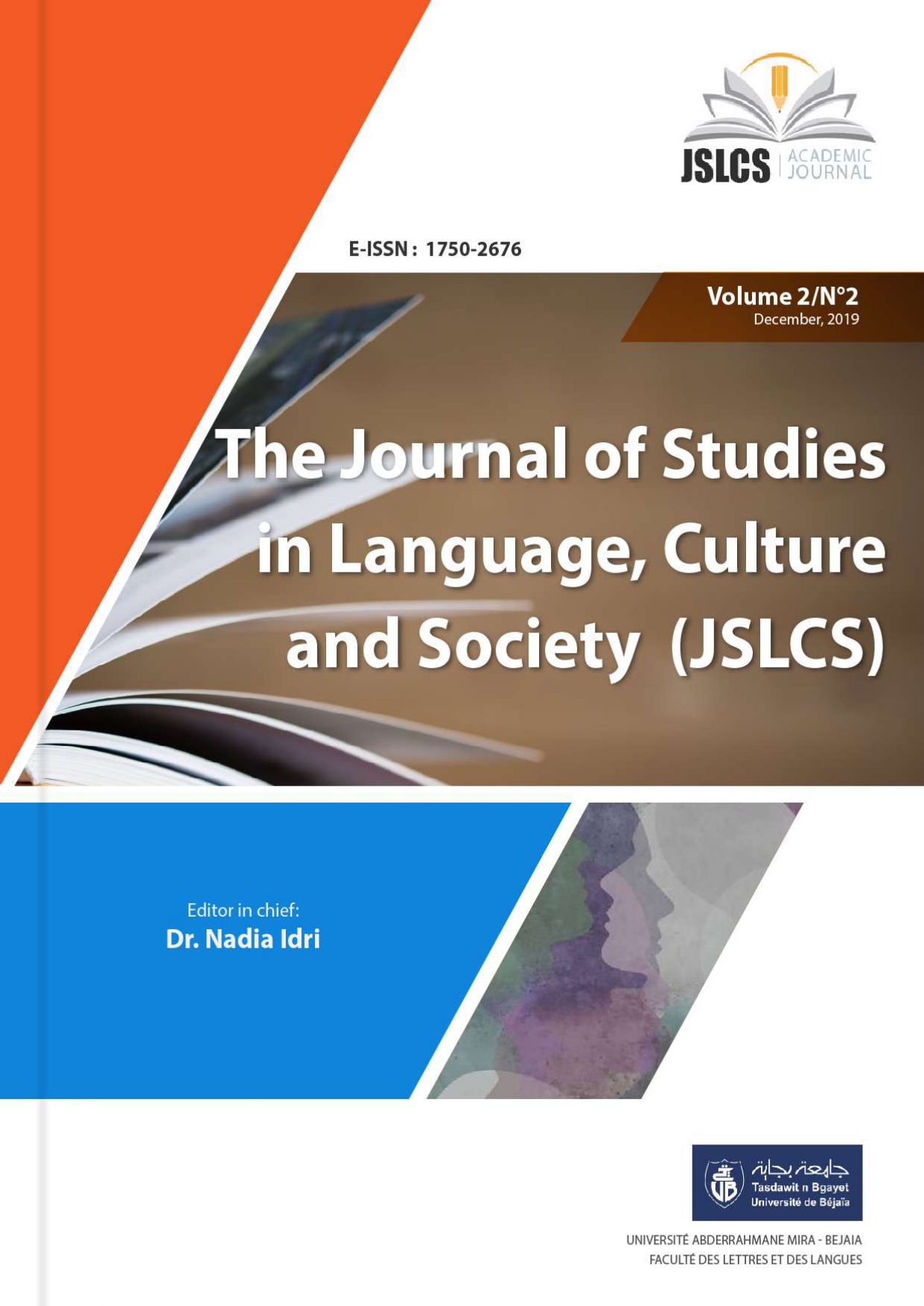Overcoming Communication Breakdowns Through The Use Of Communication Strategies; Perceptions, Practices And Perspectives
Keywords:
communication breakdowns, communication competence, communication strategies, strategy instruction-trainingAbstract
Communication competence in foreign language learning has long been a major subject under discussion and investigation in order to trigger for the factors that lead to successful or unsuccessful communication in EFL contexts. In fact, studies have demonstrated that success relates to the use of adequate learning strategies and failure pertains to the wrong use of the adequate strategy (Oxford, 1990 & 2005). The present paper, then, is an attempt to shed light on a major issue that pertains to learners‟ awareness of the appropriate use of learning strategies to overcome communication breakdowns. The findings show that it is of paramount importance that foreign language learners should be acquainted and trained to regular use of the appropriate learning strategies that allow them achieve effective communication.
References
- Anderson, G, R. (2009).Achieving Teaching Excellence. A Step-by Step Guide.USA: Anderson, G. 2009.
- Arnold,J & Brown, H, D. (1999). Affect in Language Learning. UK: The Cambridge University Press.
- Brown, A. (2009).Students‟ and Teachers‟ Perceptions of Effective Foreign Language
Teaching: A Comparison of Ideals. The Modern Language Journal,93, i,46-60.2009- Chamot, A.U. (2004).Issues in Language Learning Strategy Research and Teaching.
Electronic Journal of ELT, vol.1N°1 pp. 14-26
- Chamot, A.U. (2005). Language Learning Strategy Instruction: Current Issues And Research. Annual Review of Applied Linguistics.25,112-130.USA: Cambridge University Press.
- Dörnyei, Z. (2001). Teaching and Researching Motivation. Malaysia: Pearson Education Limited.2001.
- Dörnyei, Z. (2001). Motivational Strategies in the Language Classroom.UK: Cambridge University Press.
- Dörnyei, Z. (2003). Attitudes, Orientations, and Motivations in Language Learning. Advances in Theory, Research, and Applications.UK: Cambridge University Press.
- Dörnyei, Z. (2006). Individual Differences in Second Language Acquisition. AILA Review 19,42-68.John Benjamin Publishing Company.
- Dörnyei, Z & Schmidt, R. (2001).Motivation and Second Language Acquisition.USA: University of Hawaii Press.
- Dörnyei, Z. &Ushioda, E.(2011).Teaching and Researching Motivation. GB: Pearson Education Limited (2 ed).
- Ellis, R. (2004). Individual Differences in SLL. Handbook of Applied Linguistics. Oxford: Blackwell.
- Gardner, R. C. (1985). Social Psychology and Second Language Learning. The Role of Attitudes and Motivation. Great Britain: Edward Arnold.
- Gardner, R. C.2001).Language Learning Motivation: the Student, the Teacher, and the Researcher. Austin: Texas University.
- Griffiths, C. & Parr, J. M.(2001). Language Learning Strategies: theory and perception.ELT Journal, Volume 55/3July 2001.Oxford University Press.
- Griffiths, C.(2008).Lessons From Good Language Learners. UK: Cambridge University Press.2008.
- O‟Malley, J. M.& Chamot, A. U.(1995).Learning Strategies in Second Language Acquisition.USA: Cambridge University Press.
- Orlich, D, C et al. (2010).Teaching Strategies. A Guide to Effective Teaching Instruction. USA: Wadsworth Language Learning.
- Oxford, R. (1996). Language Learning Strategies around the World.USA: University of Hawai.
- Oxford, R. (2003).Language Learning Styles and Strategies. An Overview. Oxford: GALA








